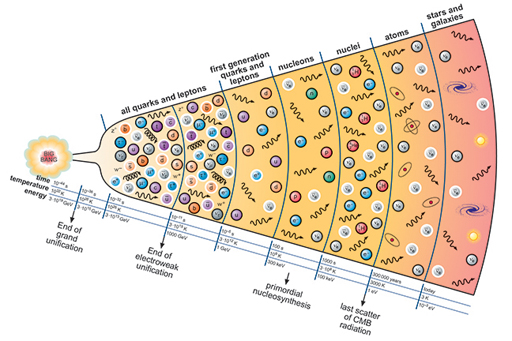3.1.2 Particle formation
At the instant of the Big Bang, all the matter in the universe formed – but because the temperature was so hot, only subatomic particles could exist.
These subatomic particles are called ‘quarks’, ‘leptons’ and ‘bosons’. In the currently accepted theory of the origin of these particles (the ‘standard model’), there are 36 of these particles including the recently discovered ‘Higgs boson’.
There was a very rapid period of expansion and cooling – known as inflation. The period of time for which inflation lasted was unimaginably small: about 0.00000000000000000000000000000000001 of a second.
It was not until about 0.00001 of a second after the Big Bang that protons, neutrons and electrons – the building blocks of atoms – could form. These particles are made up of different combinations of the subatomic particles.
If you look at the History of the Universe Timeline [Tip: hold Ctrl and click a link to open it in a new tab. (Hide tip)] you can see that over several hundred million years the tiny particles eventually became enormous galaxies. These galaxies appear to be moving away from each other like the expanding balloon you saw in the video.
In the next section, you’ll discover how astronomers have found out about the expanding Universe.

